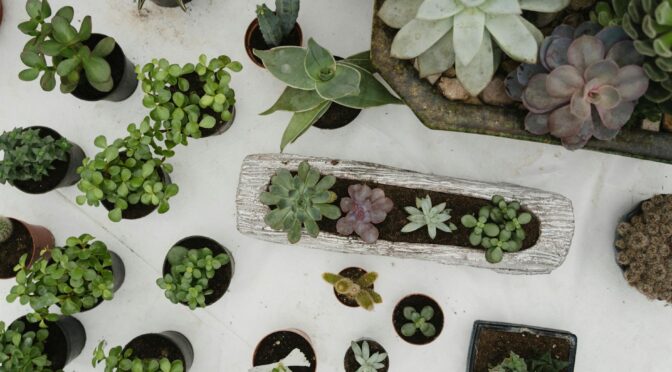Continuing my series, this post is about nine succulents that I recently bought.
Dog-Tail Cactus (Strophocactus Testudo)
The Strophocactus testudo, also known as Dog-Tail Cactus is a fascinating succulent that boasts long, trailing stems resembling a dog’s tail. This unique growth habit makes it a popular choice for hanging baskets and terrariums. It is the favourite of all my succulents.
This succulent is native to Central and South America, found abundantly in Brazil.
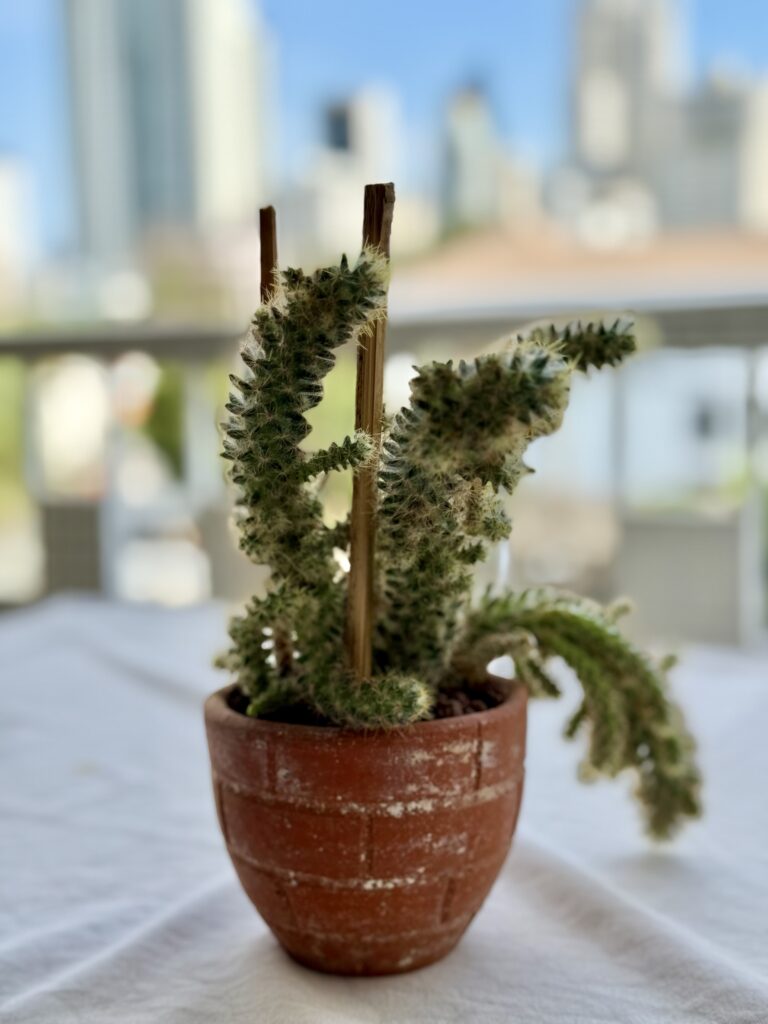
It needs careful handling, or bits of it can fall off.
You can read more about this plant, here
Peyote (Lophophora Williamsii)
Lophophora williamsii, commonly known as peyote, is a small, spineless cactus native to the southeastern United States and northern Mexico. This unique cactus is renowned for its psychoactive properties, particularly due to the presence of mescaline, a naturally occurring psychedelic compound.
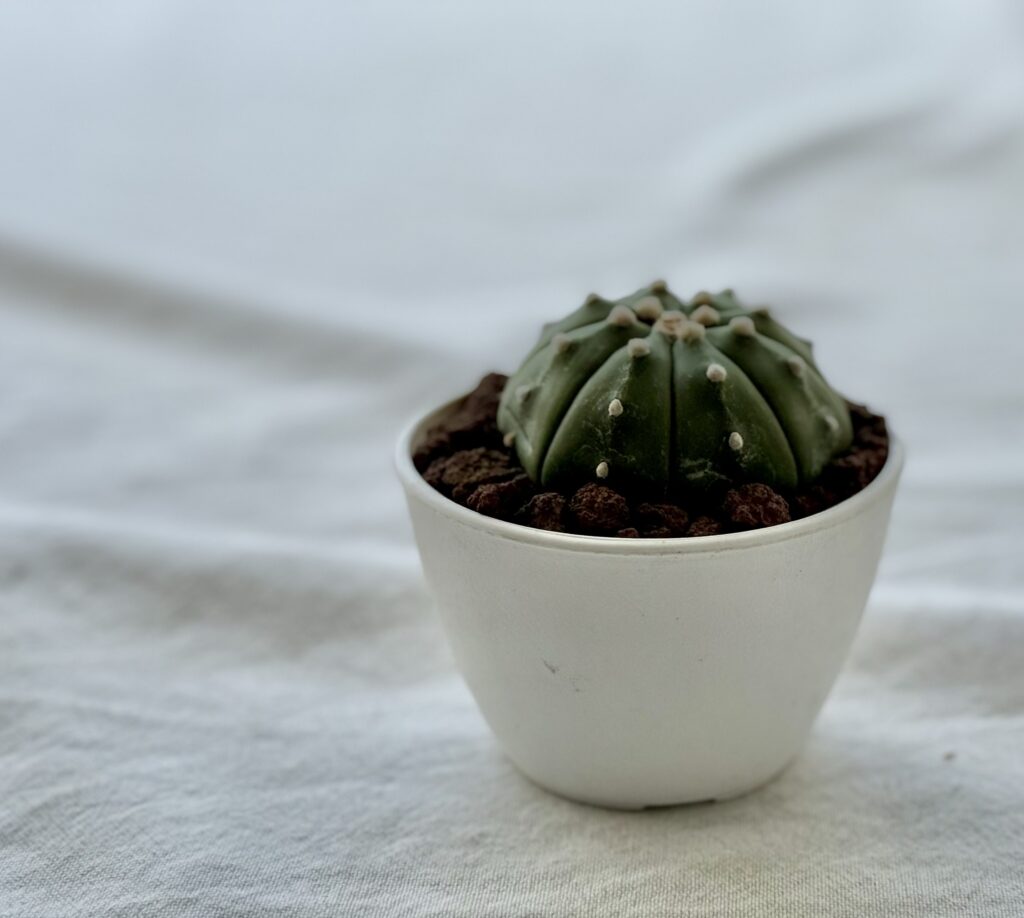
Indigenous peoples in North America have used this plant for thousands of years for religious and spiritual ceremonies. It is a sacred plant that facilitates introspection, healing, and connection with the divine.
Learn more about this fascinating plant here.
Tabia Gorge Dorstenia (Dorstenia Lavrani)
Tabia Gorge Dorstenia, also known as Dorstenia Lavrani is a beautiful succulent.
It is native to Northern Somalia, specifically north of Erigavo in the Taba’a gap (Tania Gorge) where it gets its name from.
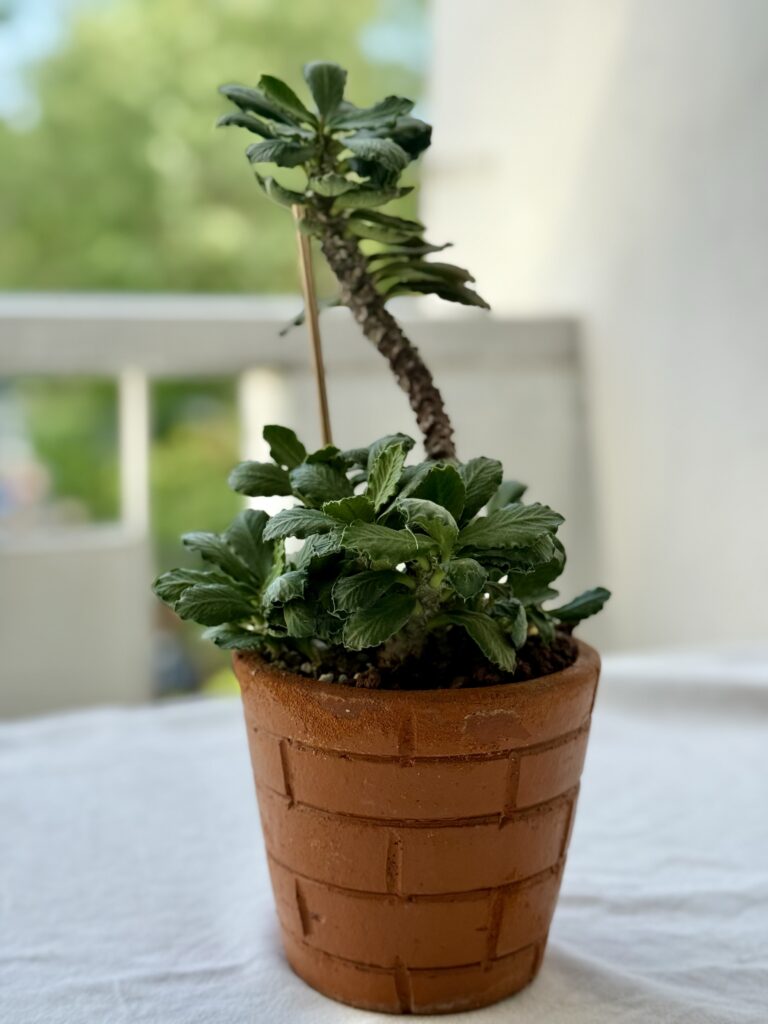
In a few months, I will pot this one in a bigger pot to let it grow bigger.
You can read more about this plant here.
African Spear Plant (Dracaena angolensis)
The African spear plant, also known as Sansevieria cylindrica or Dracaena angolensis, is a striking and low-maintenance succulent native to Angola.
Its gray-green leaves often grow in a fan shape and can reach several feet in height. Some varieties are braided or trained into patterns for a decorative effect. Like other members of the Sansevieria family, the African spear plant is incredibly hardy—thriving in a range of light conditions from bright indirect light to low light—and needs minimal watering, making it perfect for beginners or busy plant lovers.
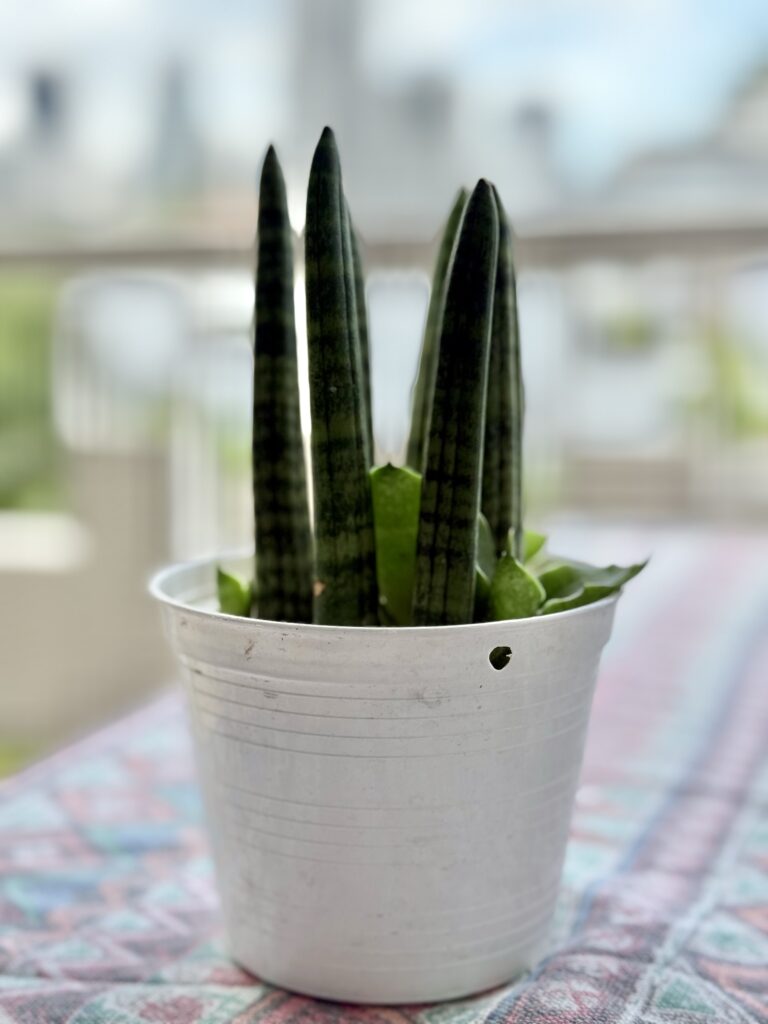
You can read more about this plant here.
Jade Plant (Crassula ovata)
The Jade plant (Crassula ovata) is a popular succulent known for its thick, fleshy leaves that resemble small jade coins—hence the name. Native to South Africa and Mozambique, it’s often seen as a symbol of luck and prosperity, making it a common gift for housewarmings or new ventures. Easy to care for, the jade plant thrives in bright light and needs only occasional watering, making it ideal for both beginner and experienced plant lovers. Over time, it can grow into a small, tree-like shrub with a sturdy trunk and branches.
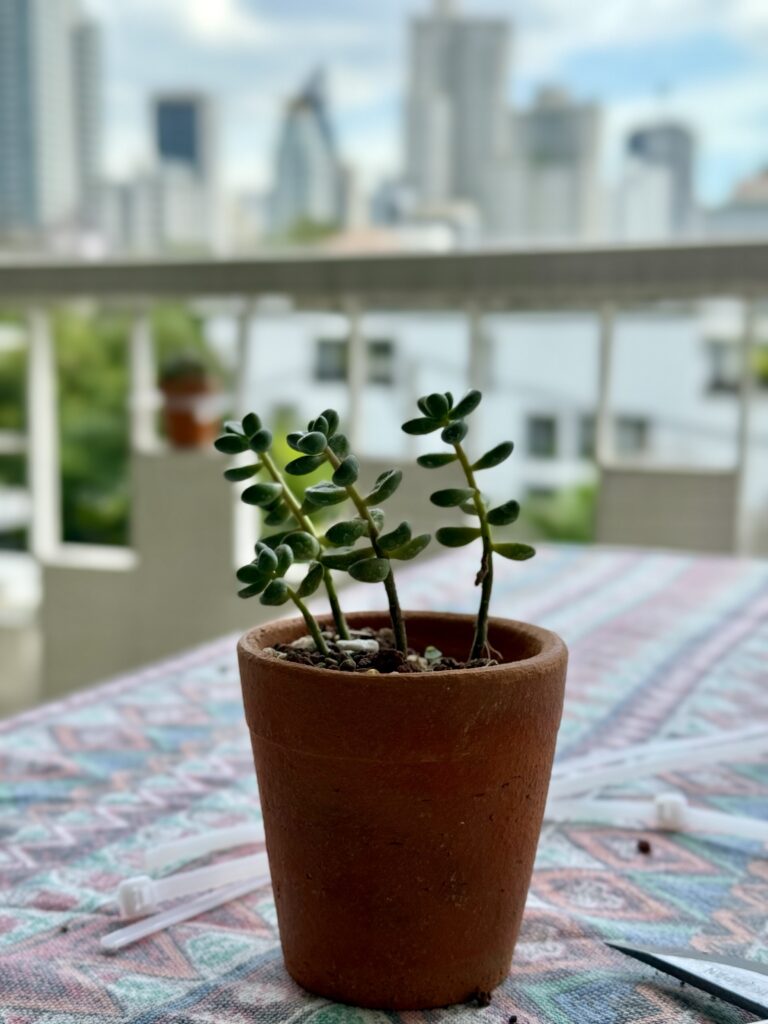
You can read more about this plant here.
Bird’s Nest Snake Plant (Sansevieria trifasciata Hahnii)
The Bird’s Nest Snake Plant (Sansevieria trifasciata ‘Hahnii’) is a compact, rosette-forming variety of the classic snake plant. Its short, broad leaves grow in a tight, nest-like cluster—hence the name—and feature striking green variegation with lighter horizontal stripes. Native to West Africa, this plant is incredibly hardy, tolerating low light, infrequent watering, and a range of conditions.
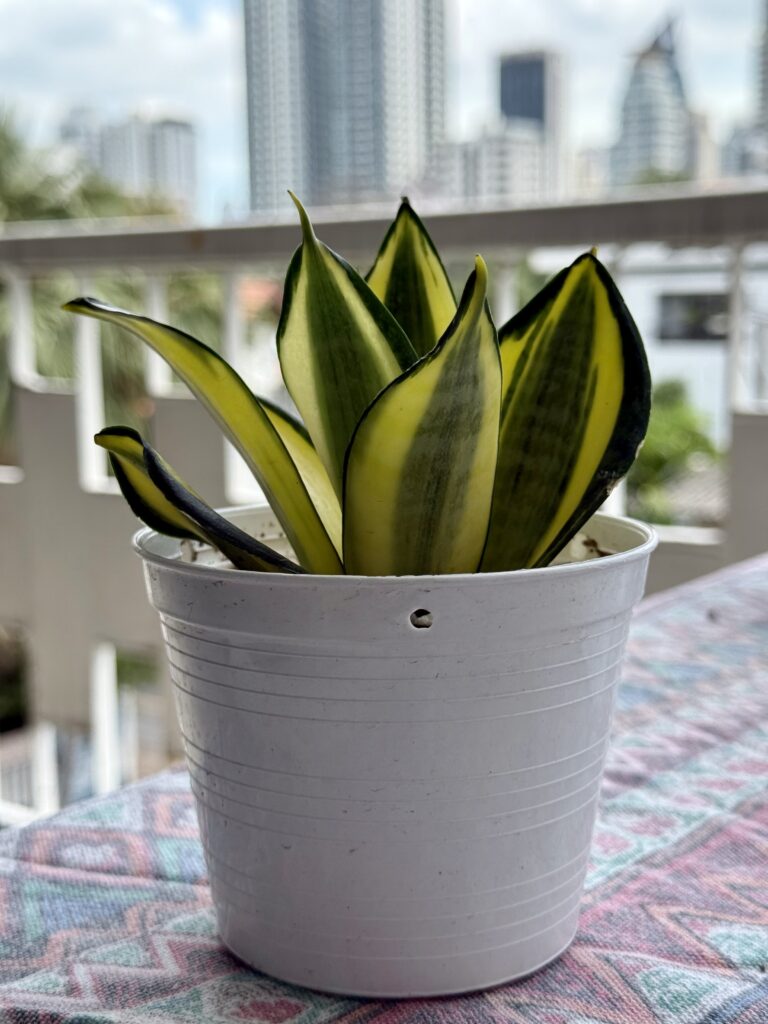
You can read more about this plant here.
Pies from Heaven (Sedeveria)
The Pies from Heaven plant (Sedeveria ‘Blue Elf’) is a charming hybrid succulent, a cross between Sedum and Echeveria. It features compact rosettes of chubby, bluish-green leaves that can blush with pink or red tones under bright sunlight or cooler temperatures. This drought-tolerant plant thrives in well-draining soil and lots of sunlight, making it a favorite for rock gardens, containers, and succulent arrangements. In the spring, it produces cheerful, star-shaped yellow flowers that attract pollinators and add to its appeal.
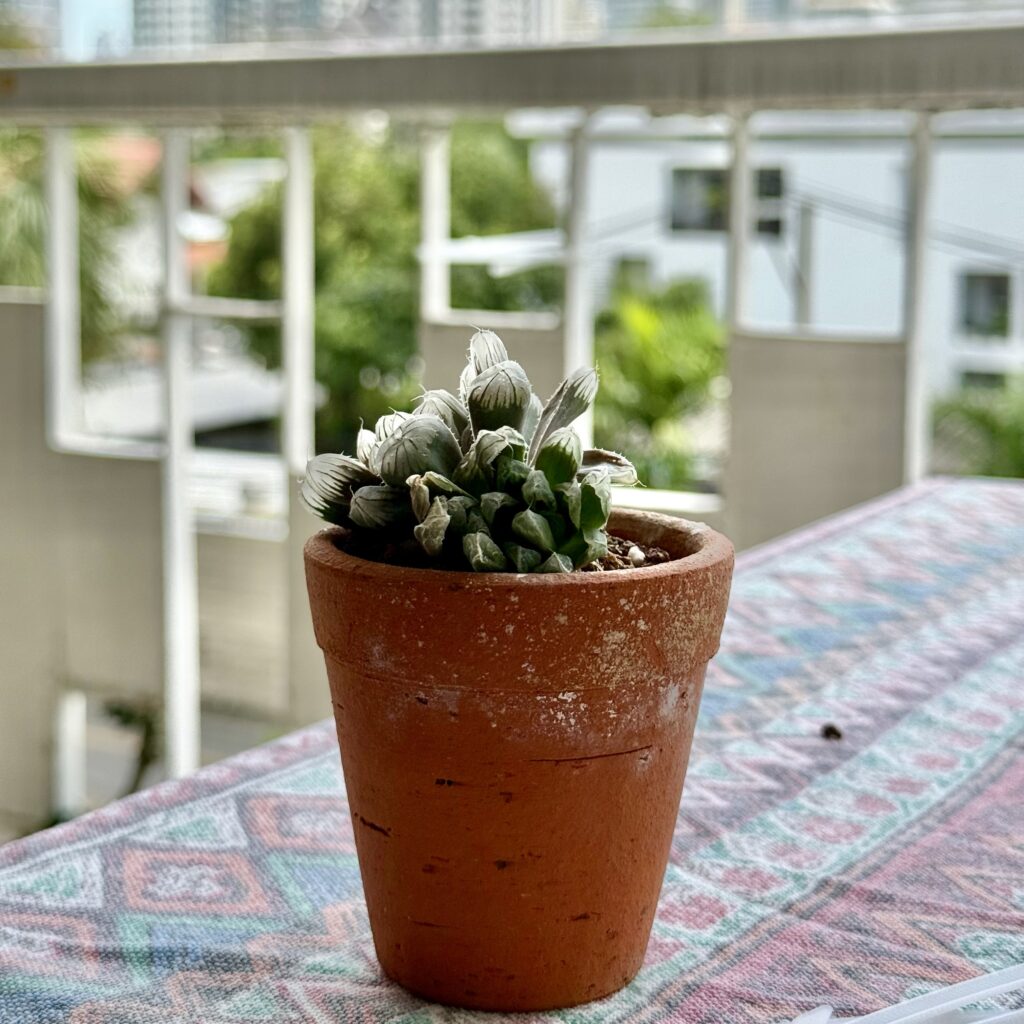
Zebra Plant (Haworthiopsis attenuata)
The Zebra Plant (Haworthiopsis attenuata, formerly Haworthia attenuata) is a small, eye-catching succulent native to South Africa. It’s named for the white, horizontal stripes that decorate its dark green, pointed leaves—resembling a zebra’s pattern. Compact and low-growing, this plant forms rosettes and is ideal for containers or small indoor spaces. It thrives in bright, indirect light and well-draining soil, requiring only occasional watering. Easy to care for and visually striking, the Zebra Plant is a favorite among succulent enthusiasts and beginners alike.
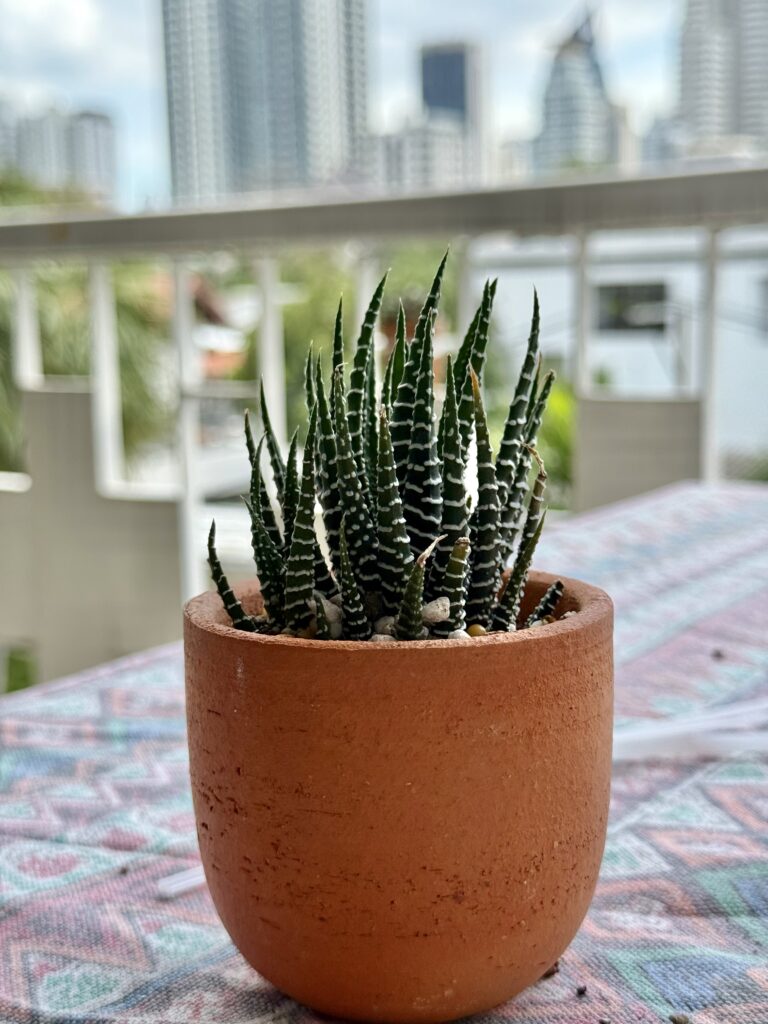
You can read more about this plant here.
Monk’s Hood cactus (Astrophytum Ornatum)
The Monk’s Hood Cactus (Astrophytum ornatum) is a striking and slow-growing cactus native to the central highlands of Mexico. It gets its name from the curved, hood-like shape of its ribs, which give it a somewhat monastic appearance. Its tall, columnar body is often ribbed and covered in small white speckles and spines, adding to its visual appeal. In summer, it may produce large, yellow, daisy-like flowers near the top, making it even more eye-catching. Hardy and drought-tolerant, the Monk’s Hood Cactus thrives in bright light and well-draining soil, perfect for arid gardens or sunny windowsills.
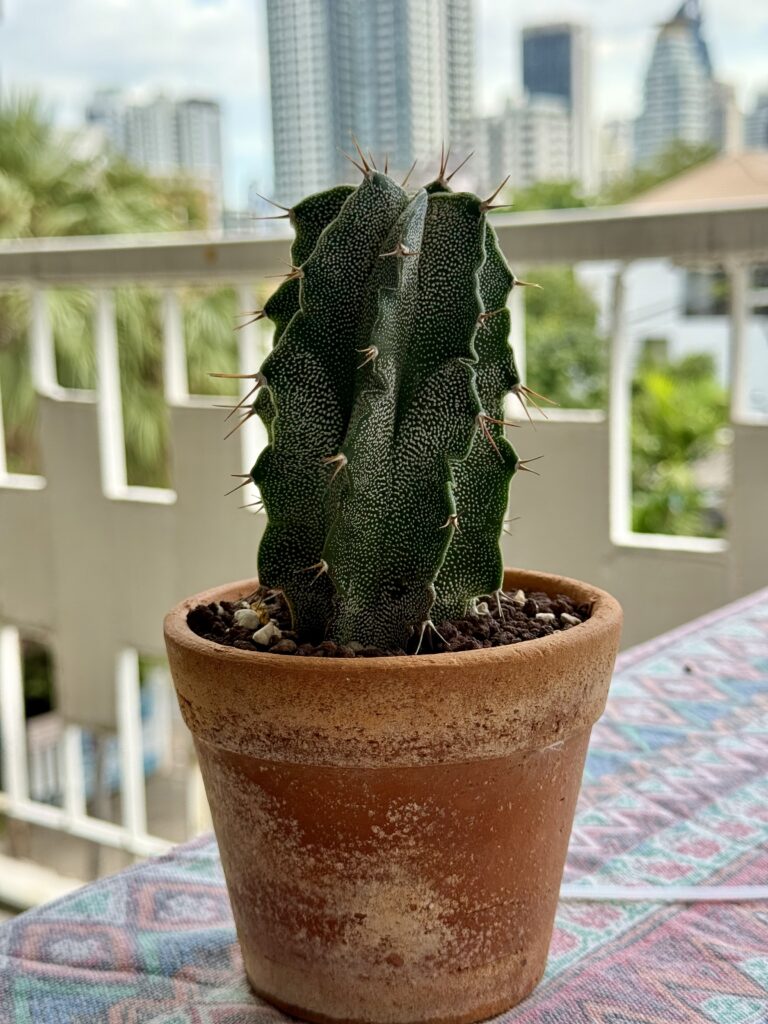
You can read more about this cactus here.
All 9 succulents thrive in bright sunlight in our south-facing balcony.
I water all of them twice a week, allowing the soil to dry out completely between watering sessions.
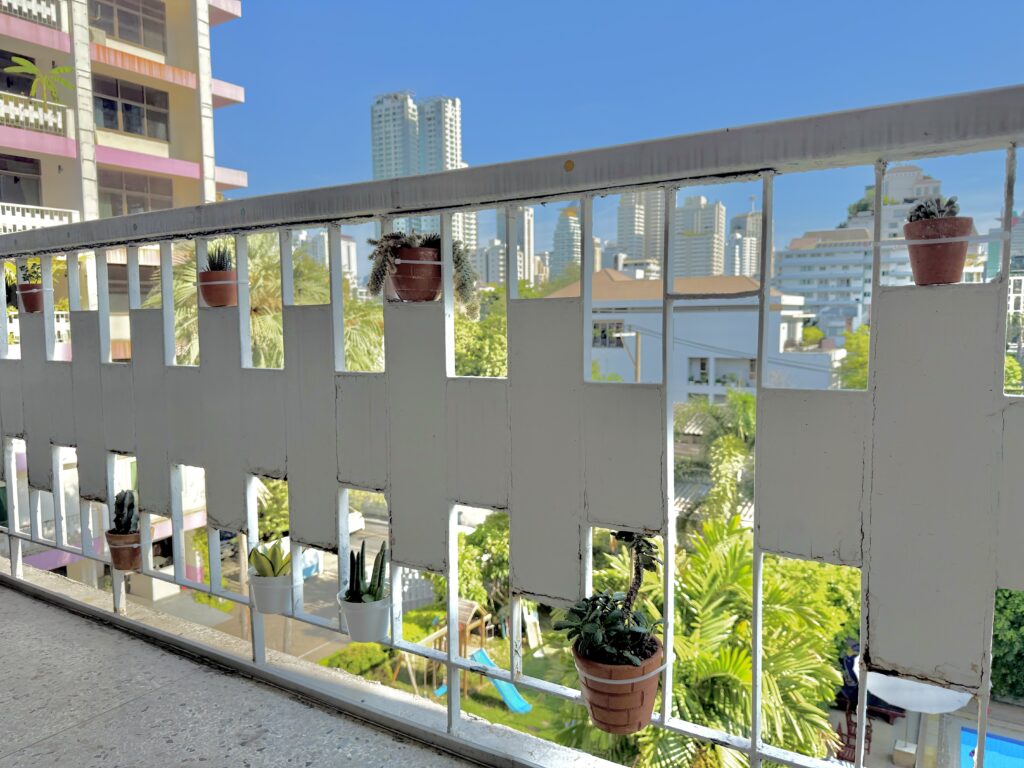
During the summer growing season, a light fertilisation every month can promote healthy growth, but it’s important to refrain from this during the dormant winter months.
